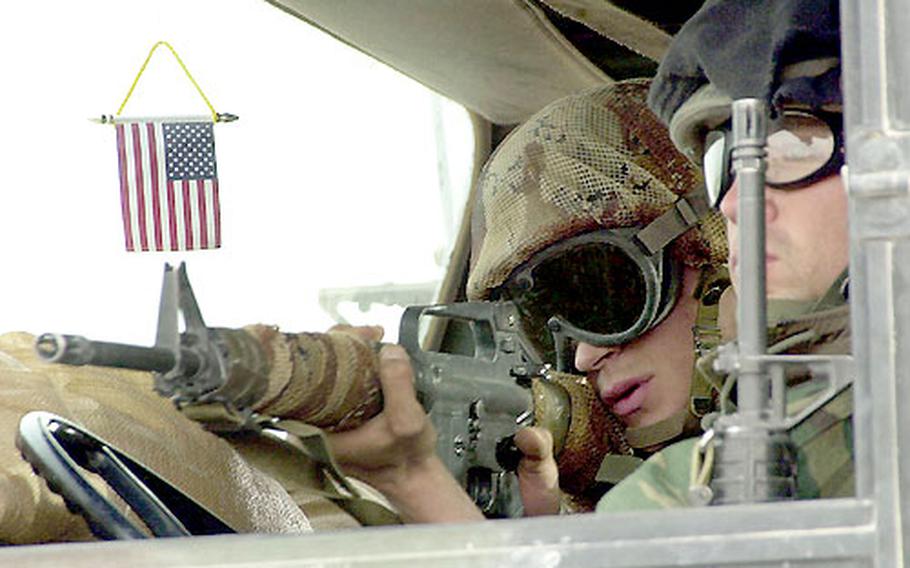
A Marine from 2nd Battalion, 23rd Marines watches for enemy movement from the cab of a seven-ton truck while convoying north through southern Iraq. (Mark Oliva/Stars and Stripes)
It began in President George W. Bush’s State of the Union speech Jan. 29, 2002. He singled out Iraq, Iran and North Korea as nations that support international terrorism.
“States like these, and their terrorist allies, constitute an axis of evil, arming to threaten the peace of the world,” Bush said. “By seeking weapons of mass destruction, these regimes pose a grave and growing danger. … The price of indifference would be catastrophic.”
The focus turned to Iraq. For months the United States lobbied the United Nations and sought to build a coalition. Allies such as Great Britain and Australia immediately offered support. Others, such as France and Germany, balked, and were labeled “old Europe” by Defense Secretary Donald H. Rumsfeld.
At 10:16 p.m. EST on March 19, President Bush again addressed the nation.
“My fellow citizens, at this hour, American and coalition forces are in the early stages of military operations to disarm Iraq, to free its people and to defend the world from grave danger.”
An F-117A dropped a bomb in Baghdad, and rumors flew that intelligence had placed Saddam Hussein there.
And before the vaunted “shock and awe” bombing campaign could have any measurable effect, ground forces punched through sand berms on the Iraq-Kuwait border. The war was under way.
The cities began to fall: Umm Qasr, Nasiriyah, Karbala. The British slugged it out in Basra. Sandstorms choked progress. There were fierce battles and tragic encounters with Saddam’s Fedayeen, his black-hooded fighters.
In three weeks, U.S. forces took Baghdad. Though looting and disorder continue, the Saddam regime has been removed, and rebuilding is under way.
For three weeks, gripping tales of triumph and horror emerged from reporters on the scene. These are their stories and a look at how the events they described might change the nature of warfare.